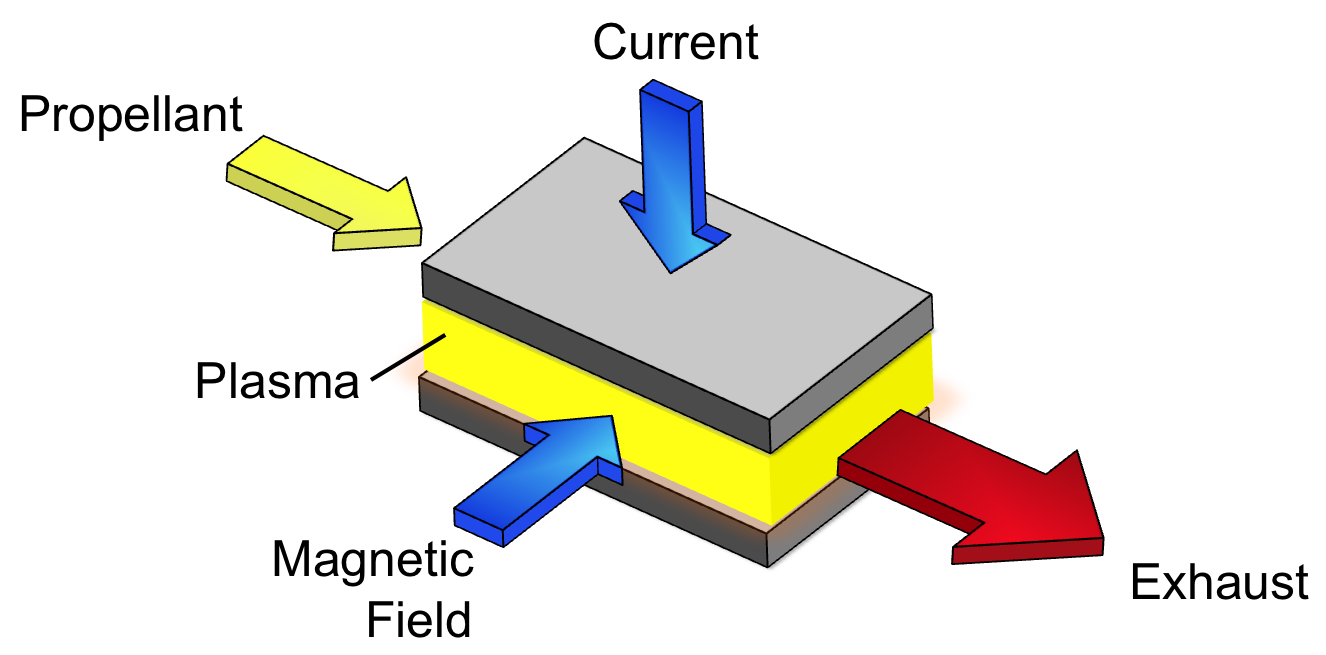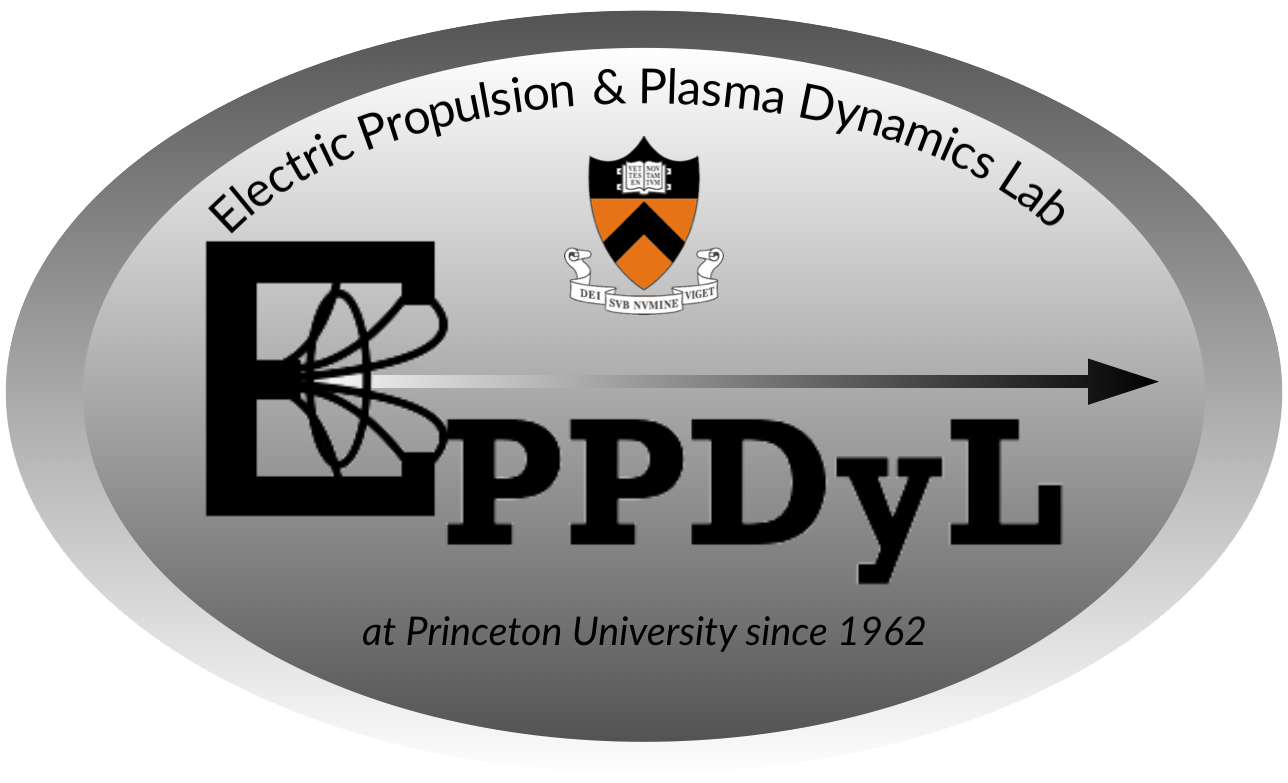Electric Propulsion
Overview
Electric Propulsion (EP) aims to reduce the cost of space exploration by providing specific impulses many times greater than those achievable with chemical propulsion, resulting in a smaller propellant mass fraction for a given mission. Because the cost of getting to low Earth orbit is presently $10,000 - $20,000 per kilogram, mass savings is a driving force in EP research.
There are three primary mechanisms through which EP can accelerate propellant:
Electrothermal
Propellant can be electrically heated to higher temperatures than can be achieved chemically, and then expanded through a physical nozzle, producing thrust.

Electrostatic
A plasma source produces ions that can be accelerated using grids maintained at a fixed voltage. The plasma source can take many forms, for example microwave radiation or contact ionization.

Electromagnetic
Ions and electrons are accelerated using a combination of electric and magnetic fields.

EP at EPPDyL
A main focus of the EPPDyL is the exploration of new propulsion concepts. See our research page to learn about our projects.
